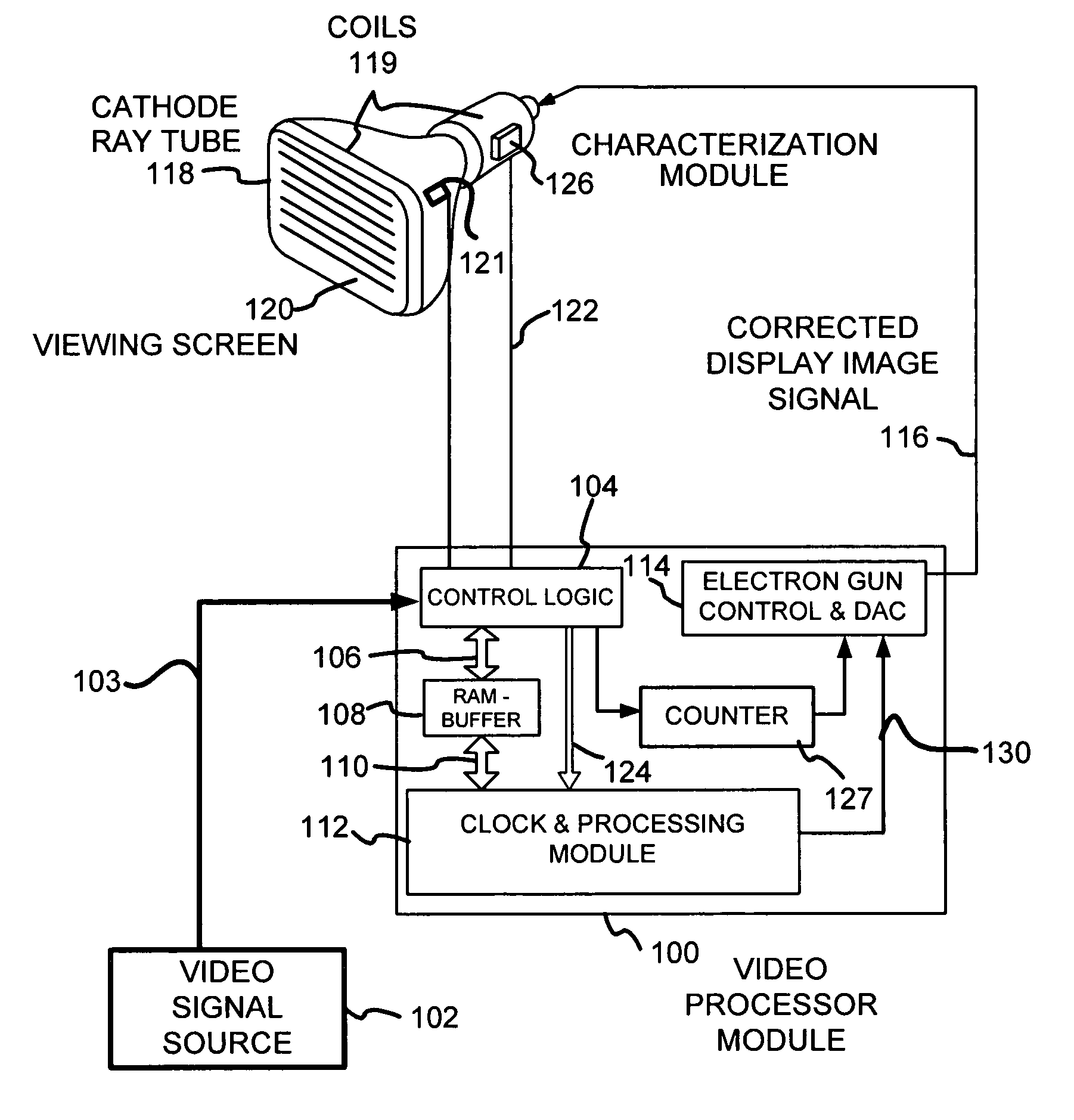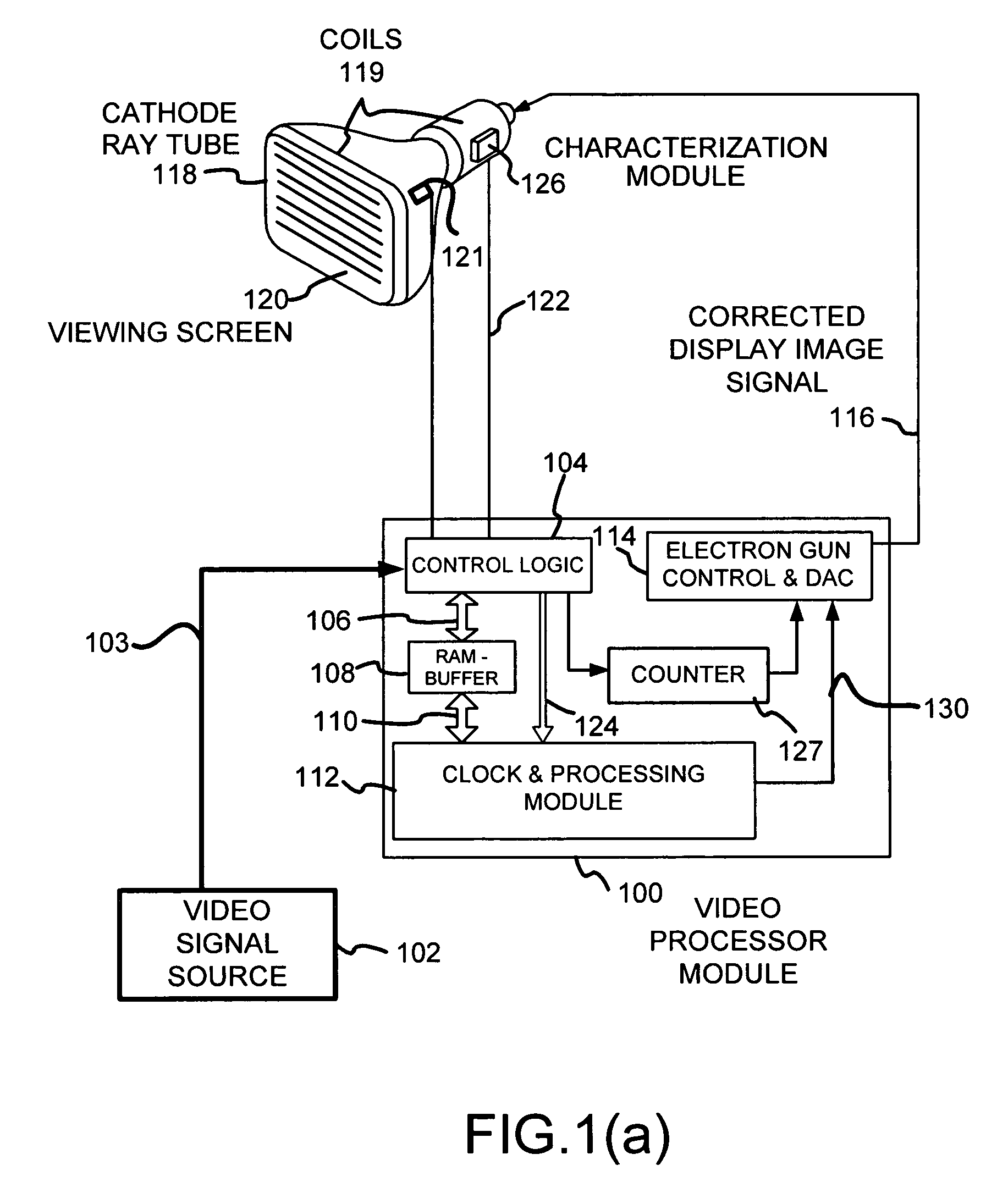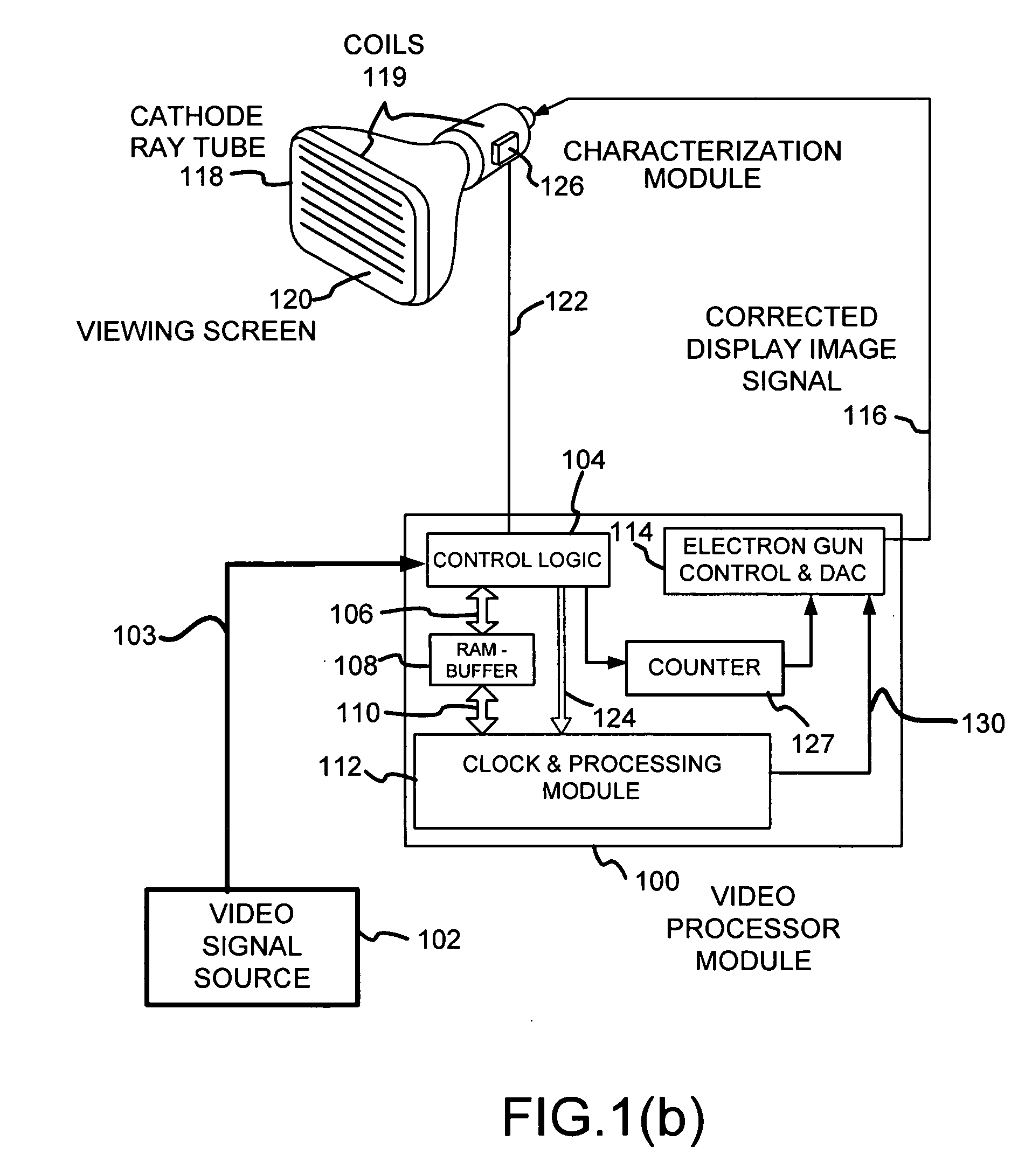Method and apparatus for correcting errors in displays
a technology for display errors and displays, applied in electrical devices, television systems, instruments, etc., can solve problems such as visual artifacts in video images displayed, image artifacts considered errors, and errors in multi-mode and pixilated video displays. achieve the effect of increasing the effective resolution and the brightness of the imag
- Summary
- Abstract
- Description
- Claims
- Application Information
AI Technical Summary
Benefits of technology
Problems solved by technology
Method used
Image
Examples
Embodiment Construction
[0083] The invention is described in detail below with reference to the drawing figures. When referring to the figures, like structures and elements shown throughout are indicated with like reference numerals.
[0084]FIG. 1(a) illustrates a system for generating a corrected display image signal 116 to display an image on a screen 120 of a cathode ray tube (CRT) 118 display device. The corrected video signal adjusts the timing and content of image data to correct for errors that would otherwise be caused by the CRT 118. A video processor module 100 maps digitized video signal data to physical screen locations and generates a corrected digital image signal 130 and then an analog display image signal 602 of FIG. 6 to correct for geometric errors introduced by the CRT 118. The mapping may be viewed as occurring in time and physical space across the CRT 118. The video processor module 100 receives a video signal from a video signal source 102, in either digital or analog form. Control log...
PUM
 Login to View More
Login to View More Abstract
Description
Claims
Application Information
 Login to View More
Login to View More - R&D
- Intellectual Property
- Life Sciences
- Materials
- Tech Scout
- Unparalleled Data Quality
- Higher Quality Content
- 60% Fewer Hallucinations
Browse by: Latest US Patents, China's latest patents, Technical Efficacy Thesaurus, Application Domain, Technology Topic, Popular Technical Reports.
© 2025 PatSnap. All rights reserved.Legal|Privacy policy|Modern Slavery Act Transparency Statement|Sitemap|About US| Contact US: help@patsnap.com



